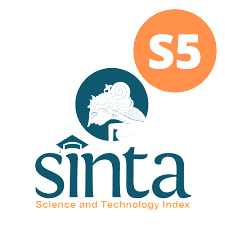MENINGKATKAN MINAT BELAJAR DENGAN MENGGUNAKAN MEDIA WORDWALL KELAS 4 DI SEKOLAH DASAR
DOI:
https://doi.org/10.33061/js.v7i1.8885Keywords:
wordwall, game online, interest in learningAbstract
Research objective: to build interest in learning in elementary school children with technology-based, namely Wordwall, nowadays almost all children in elementary schools like to play online games on cell phones/gadgets, for this reason this method can be applied to children in elementary schools to divert children's habits so as not to get addicted to online games and make interest in learning better. the basic factor that affects children's learning interest is low, namely boring teaching techniques. The homeroom teacher there only uses YouTube, PPT in teaching. After the Wordwall Media was applied to elementary school level children, especially at SDN Panggung lor grade IV to increase their interest in learning at school, it became high. Indirectly WordWall can also be used to assess knowledge besides learning students can also play online games like WordWall. The researcher used a qualitative method through observing the homeroom teacher for class IV at SDN Panggung Lor and giving questionnaires to students to find out students' interest in learning through the WOrdWall media. The results of this study using educative online game-based learning media can increase students' interest in learning.
Keywords: Interest in Learning1; WordWall2; Online game3
References
Amirudin, A., & Suryadi, A. (2016). Keragaman Media dan Metode Pembelajaran dalam Pembelajaran Sejarah Kurikulum 2013 pada Tiga SMA Negeri di Kabupaten Brebes Tahun Ajaran 2015/2016. Indonesian Journal of History Education, 4(2), 7–13.
Arifin, Z. (2013). Evaluasi Pembelajaran. PT. Remaja Rosdakarya.
Arnesti, N., & Hamid, A. (2015). Penggunaan Media Pembelajaran Online – Offline Dan Komunikasi Interpersonal Terhadap Hasil Belajar Bahasa Inggris. Jurnal Teknologi Informasi & Komunikasi Dalam Pendidikan, 2(1). https://doi.org/10.24114/jtikp.v2i1.3284
Atika, N. T., Wakhuyudin, H., & Fajriyah, K. (2019). Pelaksanaan Penguatan Pendidikan Karakter Membentuk Karakter Cinta Tanah Air. Jurnal Mimbar Ilmu, 24(1), 105–113. https://doi.org/10.55558/alihda.v16i1.50
Atmaja, H. T. (2019). Pelatihan dan Pendampingan Pembuatan dan Pemanfaatan Media Audio-Visual Interaktif dalam Pembelajaran Sejarah yang Berbasis pada Konservasi Kearifan Lokal Bagi MGMP Sejarah Kabupaten Banjarnegara. Jurnal Panjar: Pengabdian Bidang Pembelajaran, 1(2), 131–140. https://doi.org/10.15294/panjar.v1i2.29722
Leonisa, I., Soebagyo, J., Matematika, P., Siswa, S., & Polya, E. L. (2022). STRATEGI SISWA DAN LANGKAH POLYA DALAM. Proximal: Jurnal Penelitian Matematika Dan Pendidikan Matematika, 5(2), 77–86.
Rindiani, R., & Hasanah, T. (2022). Upaya Peningkatkan Hasil Belajar Mata PelajaranBahasa Arab Melalui Media Audio Visual Pada Peserta Didik Kelas Iv Madrasah Ibtidaiyah TamanIslam Cibungbulang Bogor. Jurnal Kajian Islam Modern, 2010.
Sapriyah. (2019). Madia Pembelajaran dalam Proses Belajar Mengajar. Prosiding Seminar Nasional Pendidikan FKIP, 2(1), 470–477. https://doi.org/10.35446/diklatreview.v3i1.349
Setyoningsih. (2015). E Learning : Pembelajaran Interaktif Berbasis Teknologi. Elementary, 3(1), 39–58.
Sugiyono. (2013). Statistika Untuk Penelitian. Jakarta:Alfabeta.
Supriyono. (2018). Pentingnya Media Pembelajaran Untuk Meningkatkan Minat Belajar Siswa. Pendidikan Dasar, II, 43–48.
Sutria, D. (2019). Implementasi Metode Batu Pijar Dalam Pembelajaran Matematika Untuk Meningkatkan Aktifitas Dan Hasil Belajar Siswa Sd Negeri 47 Kota Jambi. Jurnal Pesona Dasar, 7(2), 1–9. https://doi.org/10.24815/pear.v7i2.14753
Zainal, N. F. (2020). Pengukuran, Assessment dan Evaluasi dalam Pembelajaran Matematika. Laplace : Jurnal Pendidikan Matematika, 3(1), 8–26. https://doi.org/10.31537/laplace.v3i1.310
Downloads
Published
Issue
Section
License
Copyright (c) 2023 Jurnal Sinektik

This work is licensed under a Creative Commons Attribution-NonCommercial 4.0 International License.
Authors who publish this journal agree to the following terms:
- Authors retain copyright and grant the journal right of first publication with the work simultaneously licensed under a Creative Commons Attribution License that allows others to share the work with an acknowledgement of the work's authorship and initial publication in this journal.
- Authors can separately make additional contractual arrangements for non-exclusive distribution published by the journal (e.g., publish it in a book), with an acknowledgement of its initial publication in this journal.
- Authors are allowed and encouraged to send their work via online (e.g., in the institutional repositories or their website) after published by the journal.














